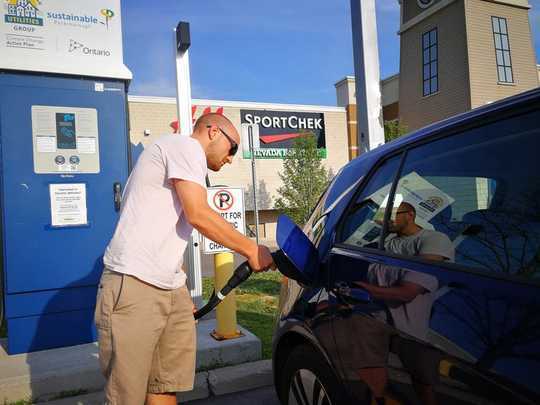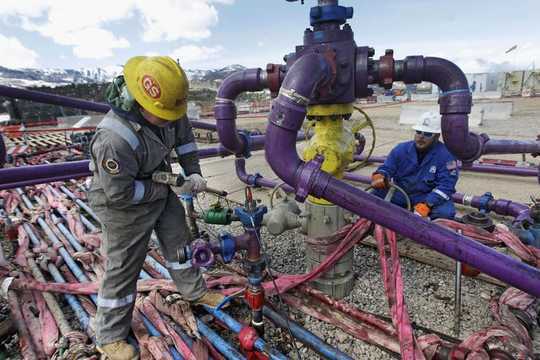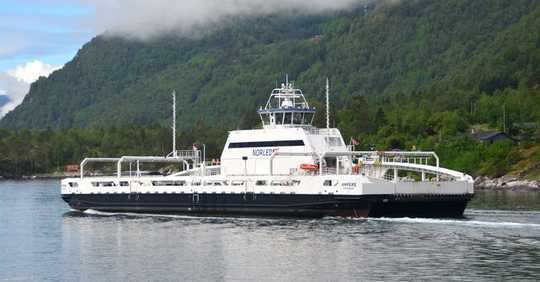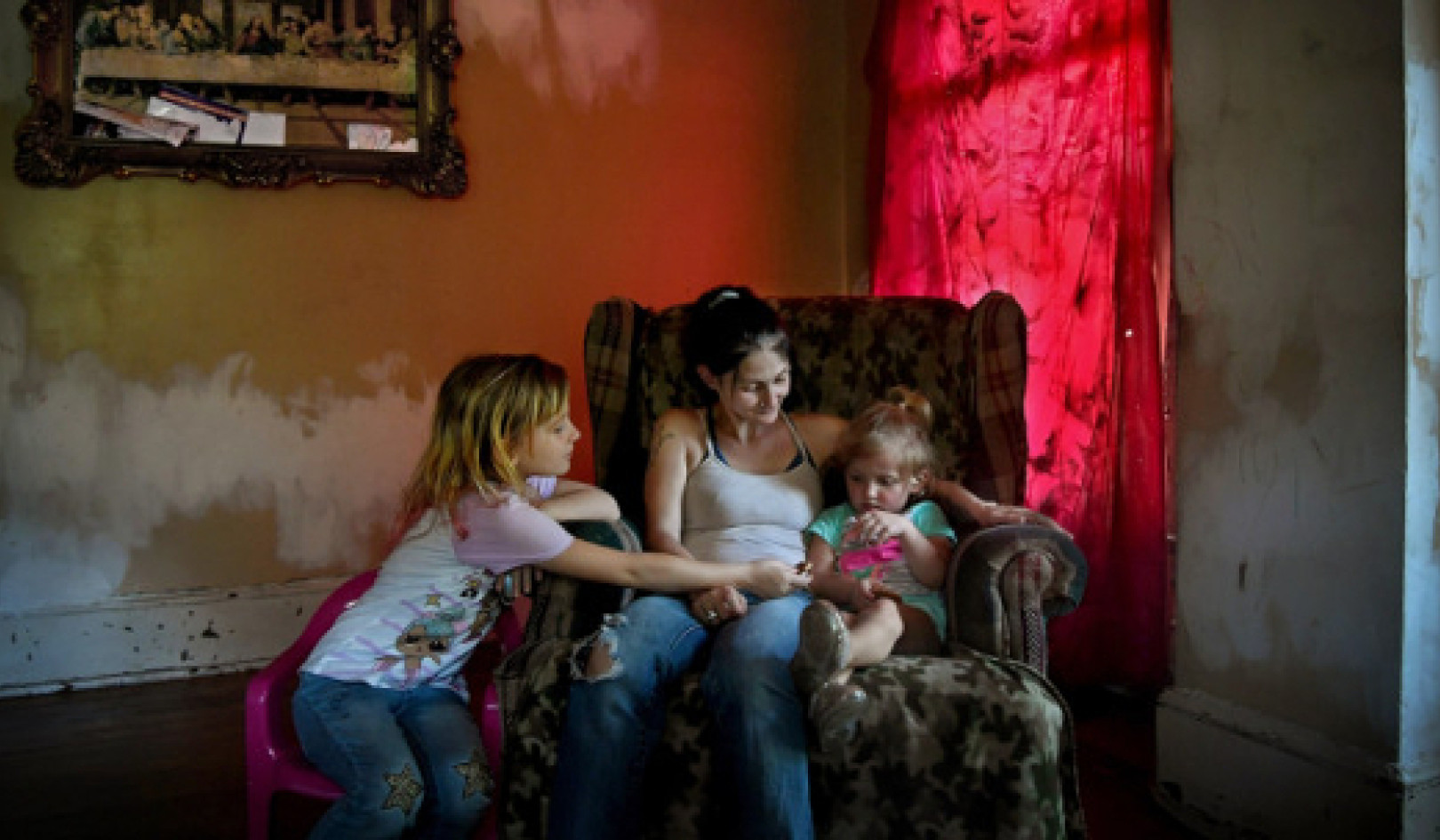 The Garzweiler surface mine produced 35 million tonnes of brown coal (lignite) in 2017. Germany plans to phase-out coal-fired power by 2038. (Shutterstock)
The Garzweiler surface mine produced 35 million tonnes of brown coal (lignite) in 2017. Germany plans to phase-out coal-fired power by 2038. (Shutterstock)
Work crews descended on 12 commuter parking lots in Toronto in late November 2018, and headed to the electric vehicle (EV) charging stations. Their work came on the heels of an IPCC report that warned of dire environmental, economic and health consequences in the absence of any serious momentum toward decarbonization by 2030.
But the crews were not adding to the two charging stations installed in each parking lot in 2013. They came to remove them.
This erasure of one provincial government’s climate project by its successor was only the tip of the melting iceberg. The steady unravelling of climate policy began when the newly elected Conservative government cancelled the provincial cap and trade system and renewable energy contracts from Ontario’s feed-in-tariff system. It also removed subsidies for electric vehicles (up to $14,000 per vehicle under the previous government).
Despite being sold as cost-cutting, some of the reversals have been expensive. Cancelling 750 renewable-energy projects, for instance, cost $231 million.
It is tempting to view this unwinding through the lens of the polarized politics plaguing many western democracies. That misses the bigger picture.
Our research on more than two dozen climate initiatives around the world — from the community level to the global scale — revealed that the Ontario story is depressingly familiar. There is no lack of climate initiatives — our case studies are only a small cross-section of thousands. Rather, the problem is that these initiatives tend to get started, make some progress and then get stuck or even regress.
Everything is connected
Dependence on fossil energy means it is difficult for a new policy or technology in isolation to catalyze breakthrough changes. Part of the story is the pushback they generate, as happened in Ontario, from political and economic interests that mobilize opposition.
But overt resistance is not the only obstacle to change. Changing one thing often runs into the powerful inertia of related policies, technologies, interests and patterns of behaviour.
For example, a local or provincial policy to incentivize electric vehicle purchases by allowing free parking or providing subsidies may make some progress reducing emissions. But if other parts of the transportation system do not change, the policy will stall or reverse.
 A man plugs in his Volkswagen e-Golf at a charging station in Peterborough, Ont., in June 2018. THE CANADIAN PRESS/Doug Ives
A man plugs in his Volkswagen e-Golf at a charging station in Peterborough, Ont., in June 2018. THE CANADIAN PRESS/Doug Ives
Without charging stations, people will have range anxiety. If subsidies decline or higher levels of government do not impose stricter fuel standards, markets for EVs can dry up. If the electric grid is supplied by dirty coal power or other high carbon fuels, EV purchases will have less effect on overall emissions. If the uptake of EVs remains low as a result, auto companies and the public may oppose such policies as costly for limited impact.
These challenging, interdependent dynamics are evident across policies and scales. Even in Germany, which implemented some of the most aggressive renewable energy policies, decarbonization has stalled despite strong public support. Pricing and policy dynamics, such as the shale gas revolution outside of Germany and the decision to phase out nuclear power, led to coal becoming the cheapest source of energy, resulting in the extension of coal-fired power plants.
The German phase-out of coal power will be complete in 2038 (too slow according to some activists) and comes with billions of Euros in compensation for coal-producing states and companies.
The purgatory of incremental change
Climate initiatives also get stuck because the momentum they generate is not always in the direction of substantial change or decarbonization. For instance, moving from coal-fired to natural gas electricity production can lower emissions. However, turning to this bridge fuel reinforces dependence on fossil energy. Political coalitions that support and benefit from such an initial change might not favour more aggressive action.
A case in point is Colorado’s New Energy Economy policy. In the mid-2000s, it included a commitment to shift from coal to renewables supported by unions and energy companies. The fracking revolution, however, lowered natural gas prices and encouraged the development of coalitions that supported it as a transition fuel.
The state government subsequently redefined the new energy economy to include natural gas, undermining its commitment to renewables. This shift put Colorado on an improved, but still carbon-intensive, pathway. The state is in the midst of changing oil and gas regulations again.
 Workers tend to a wellhead at a hydraulic fracturing operation outside Rifle, Colo., in March 2013. AP Photo/Brennan Linsley
Workers tend to a wellhead at a hydraulic fracturing operation outside Rifle, Colo., in March 2013. AP Photo/Brennan Linsley
These dynamics apply equally to individuals. Studies show that nudging people to change their daily practices can decrease their support for broader, transformative policies because they feel they have done enough.
Getting unstuck
Our research has identified four questions to ask when designing and implementing climate action to counter these dynamics: Does it disrupt dependence on fossil energy? Does it build coalitions that favour more aggressive actions? Is it sensitive to broader connections? Does it spark climate action elsewhere?
These questions suggest a need to value the transformative potential of any climate action rather than (only) the immediate emissions reductions. Quick emissions reductions like those generated by fuel switching are seductive but can stall. Instead policy-makers should evaluate climate action on whether it contributes to disrupting reliance on fossil energy and reinforcing alternative paths.
Getting unstuck also requires thinking beyond single policies. A successful EV policy like Norway’s pays attention to the entire personal transport sector (taxes and subsidies, infrastructure, etc.). It has even catalyzed change in the broader transportation sector, including electric ferries and aviation.
 A battery-powered ferry shuttles vehicles across Sognefjorden, Norway’s largest fjord, dozens of times a day. (Wikimalte/Wikimedia), CC BY-SA
A battery-powered ferry shuttles vehicles across Sognefjorden, Norway’s largest fjord, dozens of times a day. (Wikimalte/Wikimedia), CC BY-SA
Moreover, the politics of getting started are different than the politics of maintaining and extending climate action. One way to create broader coalitions of support is to build justice and equity into every climate action. Overly technocratic climate initiatives, such as smart cities, can get stuck and fail to catalyze broad decarbonization in part because they fail to generate broad and diverse coalitions to build on initial successes.
Building a better society is not possible without addressing climate change. Addressing climate change is not politically feasible without pursuing a more just and equitable society to ensure broad support.
About the Authors
Matthew Hoffmann, Professor of Political Science and Co-Director Environmental Governance Lab, University of Toronto and Steven Bernstein, Professor of Political Science and Co-Director of the Environmental Governance Lab, University of Toronto
This article is republished from The Conversation under a Creative Commons license. Read the original article.
Related Books
Drawdown: The Most Comprehensive Plan Ever Proposed to Reverse Global Warming
by Paul Hawken and Tom Steyer In the face of widespread fear and apathy, an international coalition of researchers, professionals, and scientists have come together to offer a set of realistic and bold solutions to climate change. One hundred techniques and practices are described here—some are well known; some you may have never heard of. They range from clean energy to educating girls in lower-income countries to land use practices that pull carbon out of the air. The solutions exist, are economically viable, and communities throughout the world are currently enacting them with skill and determination. Available On Amazon
In the face of widespread fear and apathy, an international coalition of researchers, professionals, and scientists have come together to offer a set of realistic and bold solutions to climate change. One hundred techniques and practices are described here—some are well known; some you may have never heard of. They range from clean energy to educating girls in lower-income countries to land use practices that pull carbon out of the air. The solutions exist, are economically viable, and communities throughout the world are currently enacting them with skill and determination. Available On Amazon
Designing Climate Solutions: A Policy Guide for Low-Carbon Energy
by Hal Harvey, Robbie Orvis, Jeffrey Rissman With the effects of climate change already upon us, the need to cut global greenhouse gas emissions is nothing less than urgent. It’s a daunting challenge, but the technologies and strategies to meet it exist today. A small set of energy policies, designed and implemented well, can put us on the path to a low carbon future. Energy systems are large and complex, so energy policy must be focused and cost-effective. One-size-fits-all approaches simply won’t get the job done. Policymakers need a clear, comprehensive resource that outlines the energy policies that will have the biggest impact on our climate future, and describes how to design these policies well. Available On Amazon
With the effects of climate change already upon us, the need to cut global greenhouse gas emissions is nothing less than urgent. It’s a daunting challenge, but the technologies and strategies to meet it exist today. A small set of energy policies, designed and implemented well, can put us on the path to a low carbon future. Energy systems are large and complex, so energy policy must be focused and cost-effective. One-size-fits-all approaches simply won’t get the job done. Policymakers need a clear, comprehensive resource that outlines the energy policies that will have the biggest impact on our climate future, and describes how to design these policies well. Available On Amazon
This Changes Everything: Capitalism vs. The Climate
by Naomi Klein In This Changes Everything Naomi Klein argues that climate change isn’t just another issue to be neatly filed between taxes and health care. It’s an alarm that calls us to fix an economic system that is already failing us in many ways. Klein meticulously builds the case for how massively reducing our greenhouse emissions is our best chance to simultaneously reduce gaping inequalities, re-imagine our broken democracies, and rebuild our gutted local economies. She exposes the ideological desperation of the climate-change deniers, the messianic delusions of the would-be geoengineers, and the tragic defeatism of too many mainstream green initiatives. And she demonstrates precisely why the market has not—and cannot—fix the climate crisis but will instead make things worse, with ever more extreme and ecologically damaging extraction methods, accompanied by rampant disaster capitalism. Available On Amazon
In This Changes Everything Naomi Klein argues that climate change isn’t just another issue to be neatly filed between taxes and health care. It’s an alarm that calls us to fix an economic system that is already failing us in many ways. Klein meticulously builds the case for how massively reducing our greenhouse emissions is our best chance to simultaneously reduce gaping inequalities, re-imagine our broken democracies, and rebuild our gutted local economies. She exposes the ideological desperation of the climate-change deniers, the messianic delusions of the would-be geoengineers, and the tragic defeatism of too many mainstream green initiatives. And she demonstrates precisely why the market has not—and cannot—fix the climate crisis but will instead make things worse, with ever more extreme and ecologically damaging extraction methods, accompanied by rampant disaster capitalism. Available On Amazon
From The Publisher:
Purchases on Amazon go to defray the cost of bringing you InnerSelf.comelf.com, MightyNatural.com, and ClimateImpactNews.com at no cost and without advertisers that track your browsing habits. Even if you click on a link but don't buy these selected products, anything else you buy in that same visit on Amazon pays us a small commission. There is no additional cost to you, so please contribute to the effort. You can also use this link to use to Amazon at any time so you can help support our efforts.

























